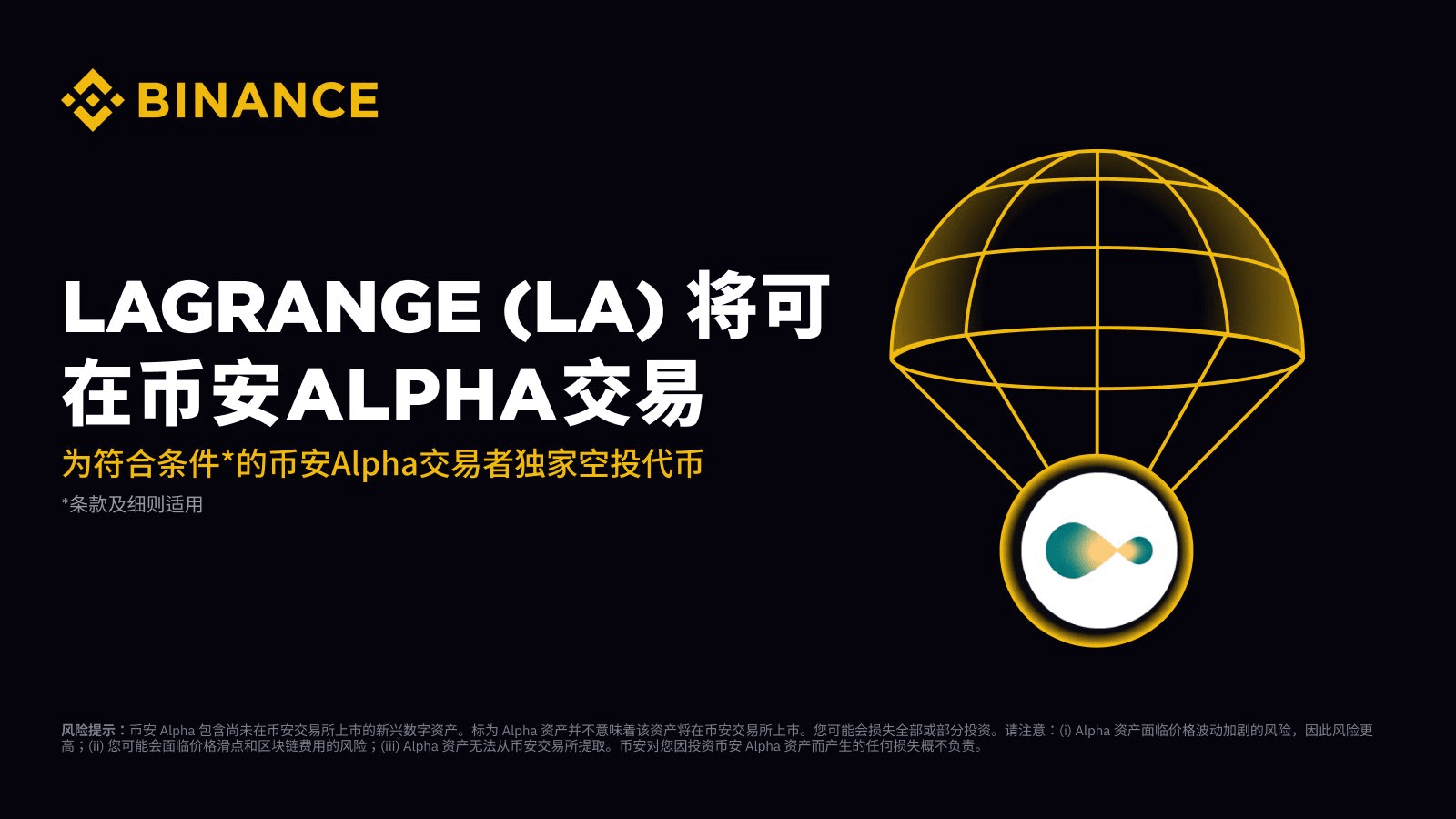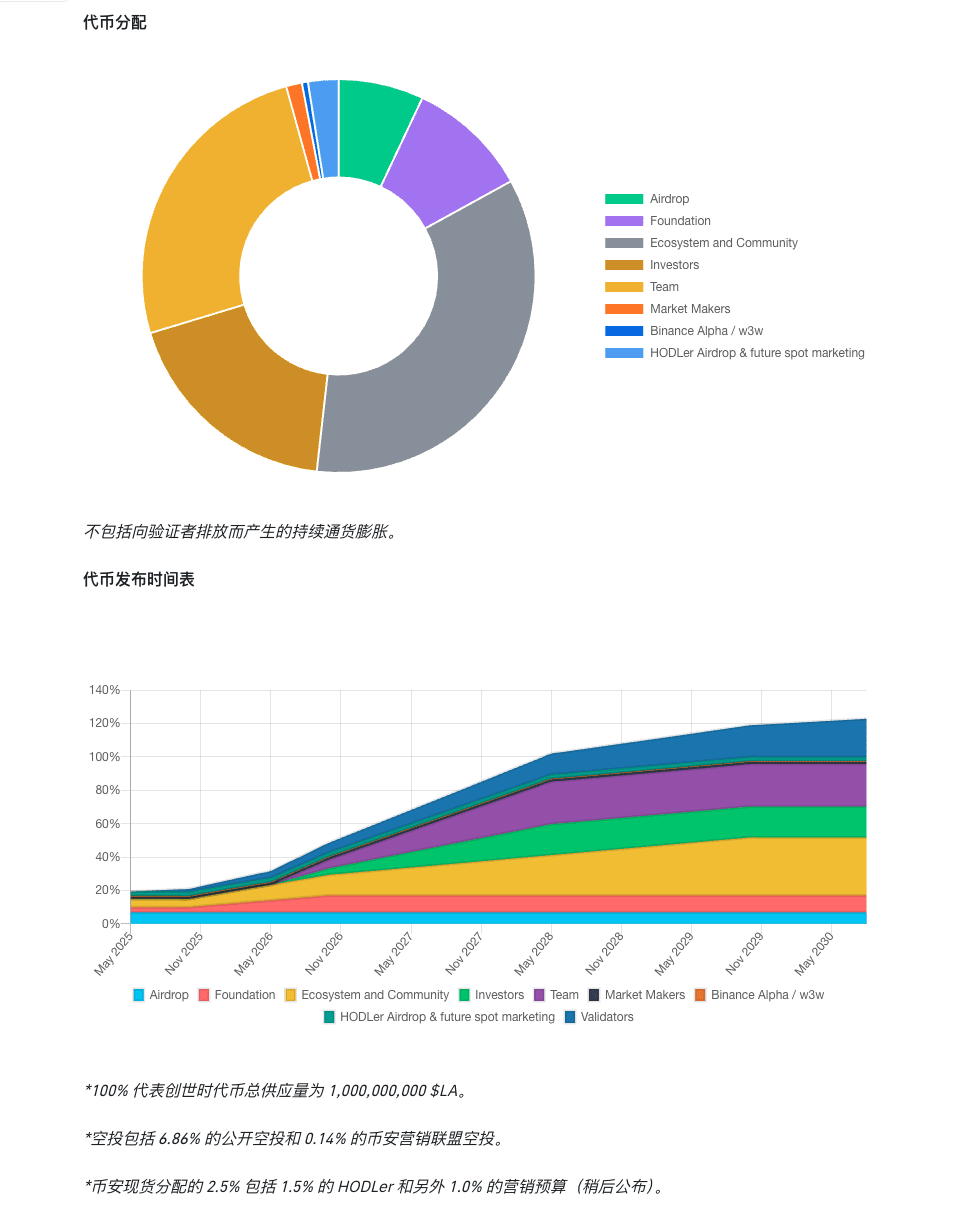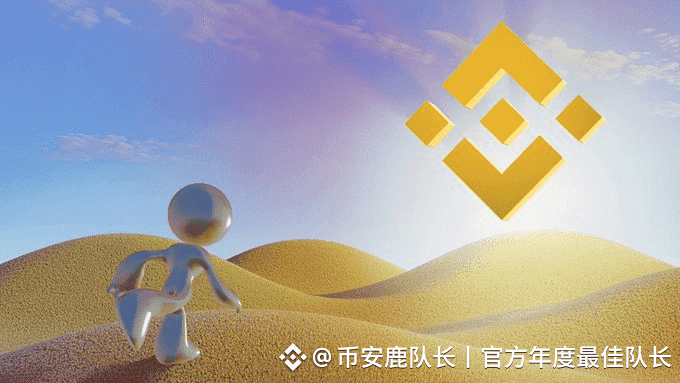
Lagrange Project Introduction:
1. Project Overview
Lagrange is an advanced modular infrastructure protocol that uses zero-knowledge (ZK) cryptography to enable verifiable computing and secure interoperability across multiple blockchains. Its core goal is to provide an infinitely scalable proof layer through a decentralized network of validators and ZK co-processors, addressing issues of blockchain scalability, privacy, and interoperability. The project is named after mathematician Joseph-Louis Lagrange, symbolizing the principles of balance and trustless interoperability.
2. Token Model: $LA Token
1. Basic Token Information
Token Name: Lagrange (LA)
Total Supply: 1 Billion (Fixed Cap)
Annual Emission Rate: 4% (Fixed, allocated to validators based on proof generation)
Token Type: Native utility token, driving the protocol's economic model
2. Token Functions and Economic Model
Fee Payment:
Customers need to pay proof generation fees with LA tokens (supports other tokens like ETH, USDC, but they must be converted to LA through the protocol).
Validators always earn rewards in $LA, forming a positive feedback loop of 'proof demand → token demand'.
Staking and Delegation:
Validator Staking: Validators must stake $LA as collateral to ensure network security and activity. If they fail to generate correct proofs on time, they risk having their staked tokens slashed.
Token Holder Delegation: Users can delegate $LA to validators, sharing staking rewards while reducing circulating supply, indirectly supporting token price.
Governance Rights:
$LA holders can participate in protocol governance through the Lagrange Foundation DAO, voting to determine key parameters (such as fee structure, staking rules, etc.).
Value Capture:
Token demand is directly linked to protocol usage, with proof demand growth driving $LA demand increase.
The annual inflation rate of 4% is distributed through proof rewards, balancing network expansion with token scarcity.
3. Token Distribution and Unlocking Plan
Distribution Details:
Community and Ecosystem: 34.78% (approximately 347.8 million tokens), allocated for ecosystem incentives, developer funding, and partnerships.
Contributors: 25.39% (approximately 253.9 million tokens), allocated to the team and early contributors.
Investors: 18.54% (approximately 185.4 million tokens), including institutions like Founders Fund and Fenbushi Capital.
Foundation: 11.30% (approximately 113 million tokens), used for the long-term development and governance of the protocol.
Airdrop: 10% (100 million tokens), reserved for community incentives and user participation.
Unlocking Schedule:
Early Contributors and Investors: Locked for 1 year after TGE (Token Generation Event), followed by linear unlocking over 2 years.
Community and Ecosystem: 5% initially unlocked at TGE, with the remaining 95% locked for 6 months, then linear unlocking over 48 months.
Foundation: Short unlocking period, specifics not disclosed, but committed to aligning with the long-term development of the protocol.
3. Circulation Status
1. Current Circulation Data (as of July 2025)
Circulating Supply: 193 million tokens (19.3% of total supply).
Market Capitalization: Approximately $340 million (based on a price of $0.34 at the time).
24-Hour Trading Volume: Approximately $38.8 million, with a high turnover rate, indicating market activity.
Major Trading Platforms: Binance, HTX, Bybit, Gate.io, etc., supporting trading pairs like USDT, TRY, USDC.

2. Circulation Rate and Unlocking Progress
Initial Circulation: 19.3% unlocked during TGE (193 million tokens), including initial unlocks for the community, ecosystem, and foundation.
Subsequent Unlocking:
Within 2025: Community tokens will be gradually released, and investor tokens will unlock starting in 2026.
In the long term, circulating supply will gradually increase with the unlocking plan, but staking mechanisms (such as delegated staking) can partially hedge against selling pressure.
3. Market Performance and Price Volatility
Short-term Price: In July 2025, LA price fluctuated between $0.33 and $0.37, influenced by market sentiment and unlocking expectations.

4. Core Advantages and Challenges
1. Advantages
Technological Innovation: The world's first infinite proof layer, combining ZK co-processors with a decentralized proof network, supporting complex computations (such as verifiable AI, cross-chain queries).
Economic Model: Token demand is directly tied to proof demand, forming a sustainable value cycle.
Ecosystem Support: Backed by 85+ institutional operators including Founders Fund and Coinbase Cloud, with strong technological feasibility.
2. Challenges
Competitive Pressure: Faces competition from mature projects like zkSync and Polygon zkEVM, requiring differentiation to break through.
Technical Risks: The efficiency of ZK co-processors and proof generation speed need further validation, with commercial scenarios yet to be widely implemented.
Token Unlocking Pressure: Tokens for early investors and the team will be gradually unlocked, potentially exerting pressure on short-term prices.

Register on Binance using referral code: DBQAREOK
Follow me for periodic updates on various project information!
https://www.marketwebb.link/en-US/join?ref=DBQAREOK